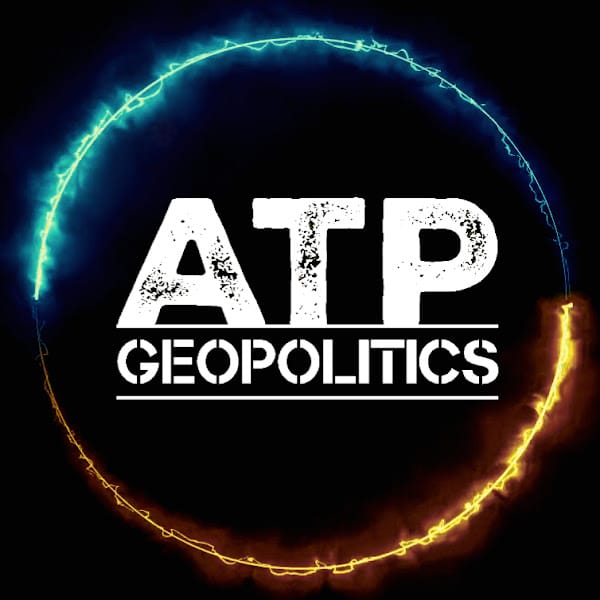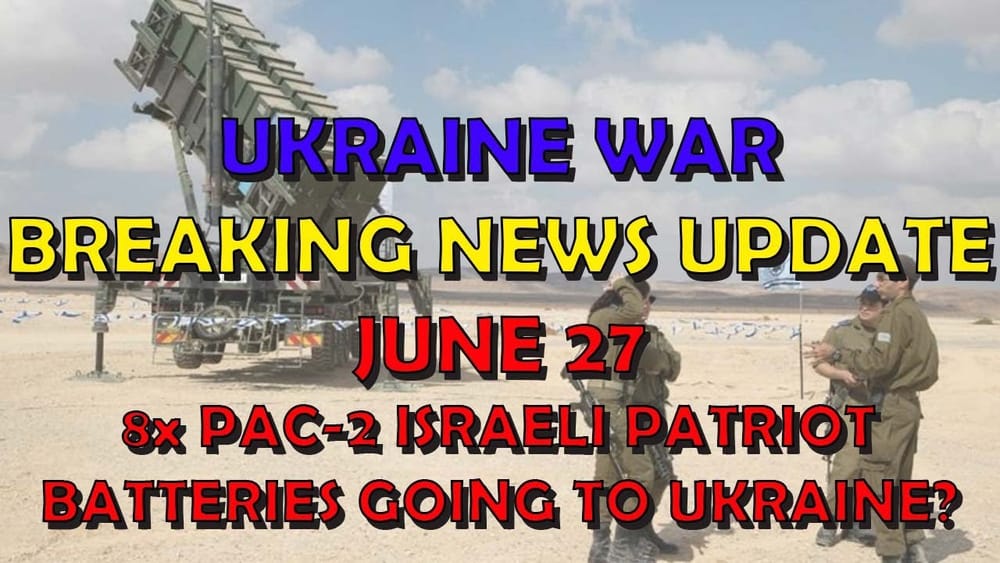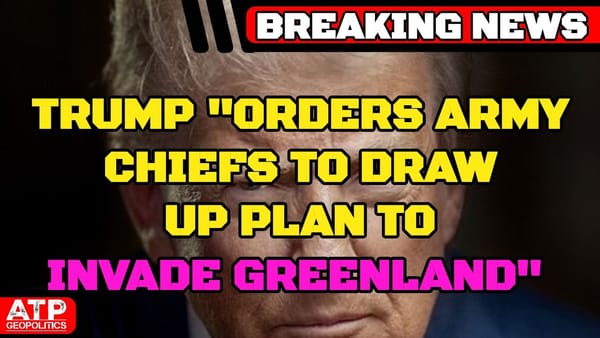Ukraine War BREAKING NEWS: 8x Israeli Patriot Batteries to Go to Ukraine?
Table of Contents 📖
"Israel's PAC-2 Patriots have changed the game for Ukraine - this is really, really significant."
Hello Team
🎦 00:00-00:18⏩
Jonathan welcomes viewers to an ATP Geopolitics Breaking News Update, highlighting the significance of the potential transfer of Israeli Patriot systems to Ukraine.
Return to top⤴️
US in talks to send Israel's Patriot systems to Ukraine
🎦 00:18-03:05⏩
Jonathan discusses a Financial Times report stating that the US is in talks to send up to eight Israeli Patriot air defence batteries to Ukraine. This transfer, if realised, would significantly enhance Ukraine's air defence capabilities, surpassing the initially discussed four batteries. The deal would involve sending the Patriots from Israel to the US for refurbishment before being delivered to Ukraine. Jonathan speculates that the recent US decision to pause Patriot interceptor missile deliveries to other countries is likely linked to this potential agreement. He believes that such equipment announcements often follow the actual deployment, suggesting these systems may already be en route to, or in, Ukraine.
Return to top⤴️
Israel's complex relationships with Russia and Ukraine
🎦 03:05-08:46⏩
Jonathan delves into the complexities of Israel's relationships with Russia and Ukraine. He highlights Israel's historical caution regarding Russia due to Moscow's influence in Syria, where Israel conducts operations against Iranian proxies. He also notes the significant Russian-speaking population in Israel, many of whom oppose Putin. Jonathan acknowledges rumours of Putin receiving cancer treatment in Israel before the war and suggests this might have influenced Netanyahu's stance on Ukraine. However, Russia's support for Hamas during the recent conflict has strained relations, pushing Israel closer to Ukraine. Jonathan acknowledges the ethical dilemma surrounding support for Israel due to the complexities of the Israeli-Palestinian conflict and draws parallels with differing views on providing aid to Ukraine. He points out the varying stances within the US Democratic Party and the delicate balance President Biden must maintain regarding Israel.
Return to top⤴️
Details of the Patriot deal and diplomatic discussions
🎦 08:46-09:40⏩
Jonathan reports that discussions are ongoing about transferring all eight Patriot systems, though the final number sent to Ukraine might be less. Citing the Financial Times, he mentions talks between Ukrainian Foreign Minister Dmytro Kuleba and US Secretary of State Antony Blinken, and between US National Security Advisor Jake Sullivan and Andriy Yermak, Head of the Office of the President of Ukraine. While Kuleba confirmed Ukraine's efforts to acquire more Patriot systems, he didn't specifically confirm these talks. Sources suggest direct dialogue between Israel and Kyiv regarding the Patriot transfer. The US and Ukrainian governments declined to comment, while the Israeli Prime Minister's Office directed inquiries to the Defence Ministry, who didn't respond.
Return to top⤴️
Capabilities and significance of the Israeli Patriot (PAC-2) systems
🎦 09:40-12:07⏩
Jonathan emphasises the impact of Russia's air campaign on Ukrainian infrastructure and civilian populations. He explains that Israel's aging PAC-2 Patriot batteries, while older than those already in Ukraine, are compatible and come with a substantial stock of interceptor missiles, addressing a crucial Ukrainian need. Notably, these older interceptors have a longer range (100 miles) and larger warheads compared to the newer PAC-3, making them ideal for targeting Russian aircraft deploying glide bombs from afar.
Return to top⤴️
Jonathan's strategic analysis of Patriot deployment
🎦 12:07-13:10⏩
Jonathan analyses the potential impact of eight Israeli Patriot systems, suggesting they could provide air defence coverage for all major Ukrainian cities and key infrastructure. Utilising a map, he proposes deploying these systems closer to the front lines to engage Russian aircraft within Russian or occupied Ukrainian airspace, reserving other systems like the PAC-3 for ballistic missile defence around strategic locations like Odesa and Mykolaiv.
Return to top⤴️
Comparison of PAC-2 and PAC-3 Patriot missiles
🎦 13:10-15:33⏩
Jonathan, referencing information from Twitter user Colby Badwar, notes that Israel's Patriot systems originated from the US and German armies and are all PAC-2 configurations. He uses Microsoft's AI Copilot to outline the differences between PAC-2 and PAC-3 Patriot missiles:
- Guidance and Radar: PAC-3 has an integrated radar transmitter and guidance computer for improved accuracy.
- Warhead and Range: PAC-2 utilises an explosive warhead with a longer range against aircraft, while PAC-3 uses a proximity-fused warhead with tungsten rods, better suited for ballistic missiles.
- Firepower and Reloads: PAC-3 offers greater firepower and faster reload times compared to PAC-2, making it effective against large-scale attacks.
- Radar Support: PAC-2 is supported by the AAN/MPQ-53 radar, while PAC-3 can utilise both the AAN/MPQ-53 and the more advanced AAN/MPQ-65 radar.
Jonathan highlights the compatibility of these Patriot systems with Ukraine's existing integrated air defence network.
Return to top⤴️
Effectiveness of Ukrainian air defences and importance of PAC-2 for countering Russian aviation
🎦 15:33-17:18⏩
Jonathan discusses the range difference between PAC-2 and PAC-3 missiles, reiterating the advantage of PAC-2 (100-mile range) over PAC-3 (50-75-mile range) for engaging aircraft within Russian or occupied territory. He believes securing both older PAC-2 batteries and newer PAC-3 systems from various allies would significantly enhance Ukraine's air defence capabilities, making the Israeli contribution a game-changer.
Return to top⤴️
Potential benefits for Israel beyond supplying Ukraine
🎦 17:18-18:44⏩
Jonathan considers the deal's advantages for Israel, quoting Colby Badwar's argument that each Russian jet downed by Ukraine reduces the likelihood of Russia selling Su-35s to Iran. Weakening the Russian Air Force could deter the sale or prompt Iran to seek alternative suppliers. This benefits Israel by limiting Iran's access to advanced weaponry and potentially making any future Israeli operations against Iranian nuclear facilities easier.
Return to top⤴️
Wrap up
🎦 18:44-19:03⏩
Jonathan expresses hope for the deal's success, believing eight Patriot systems deployed near the front lines would be transformative for Ukraine's defence. He ends the video with "Slava Ukraini!"
Return to top⤴️




